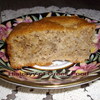
Until the 3rd decade of 20th century, shortages posed a continuing threat to many of the poorest areas in Greece. Things were getting worse during wars… In Graeco- Roman and Byzantine world famine was a weapon. Various theoritical works offered recipes how to destroy crops, fields, food supplies, how to poison water.
So, warfare included burning or salting fields, or attacking those who cultivated the soil.
Then the major characteristics of famine, the widespread and acute hunger and the disease, made their appearance.
In case of famine or shortage, people are forced to consume any available source of food, even of the worst quality (grass, pieces of leather, rats etc.). However, starvation almost never affects people equally. It is the poor or the inhabitants of poor areas who suffer the most.
Shortage of food was probably the main problem of World War II, particularly during the winter of 1944/45. Fuit and vegetable producing areas were luckier than the rest of country, since they could make even flour with dried fruits (apples, pears, figs etc.) or dried vegetables, wild greens etc. During that period, apple bread became popular in apple producing areas. Apple flour was its main ingredient and yeast was used as raising agent, though sodium bicarbonate was also used sporadically. The wheat bread consumption increased after the World War II against the other kinds of bread but some years later an apple cake became popular. This cake seems to be the rich brother of the apple bread.
APPLE BREAD
1 ½ k. apple flour
500 gr. whole wheat flour
50 gr yeast
1 tsp salt
2 tbs olive oil
1 lt. warm water
olive oil, for brushing the pan
In a bowl dissolve the yeast in ½ cup warm water. Stir well and add 1 glass of warm water and 1 glass wheat flour. Stir again, cover with a cheesecloth and let for 12 hours in a warm place.
The next morning, combine the remaining wheat flour with the apple flour and salt in a large bowl.
Make a well in the center and pour in the starter mixture, the olive oil and the rest of warm water. Stir to form the dough. Knead with your hands, sprinkling the dough with more flour if it is too sticky or adding some warm water if it is too hard. (The whole wheat and apple dough needs more kneading than ordinary bread dough.) When dough becomes smooth put it in a bowl, cover with a cheesecloth and let it rise in a warm place for about 2 hours. When the dough is doubled in size, divide it and shape in loaves. Place them on oiled loaf –pans, brush with olive oil or milk and cover. Let rise in warm place until doubled in size. Bake loaves for 40 – 50 minutes or until lightly golden and hollow sounding when tapped. (Preheated oven 180ºC) Let breads cool on a rack.
APPLE CAKE
1 cup milk
2 ½ cups flour
¾ cup sugar
½ cup virgin olive oil
3 eggs
¼ tsp. salt
1 tsp cinnamon powder
½ tsp ground nutmeg
2/3 tsp lemon zest
1 ½ cup apples, peeled and cut in cubes
Beat sugar with olive oil. Beat eggs. Add sugar and olive oil and beat again. Add milk and stir very well. Gradually add flour, salt, zest and spices and mix well. Fold in apples. Pour the mixture into an olive-oiled and floured baking pan. Bake it 190 º C, for 40 minutes. Let it cool for 10 minutes before serving.






